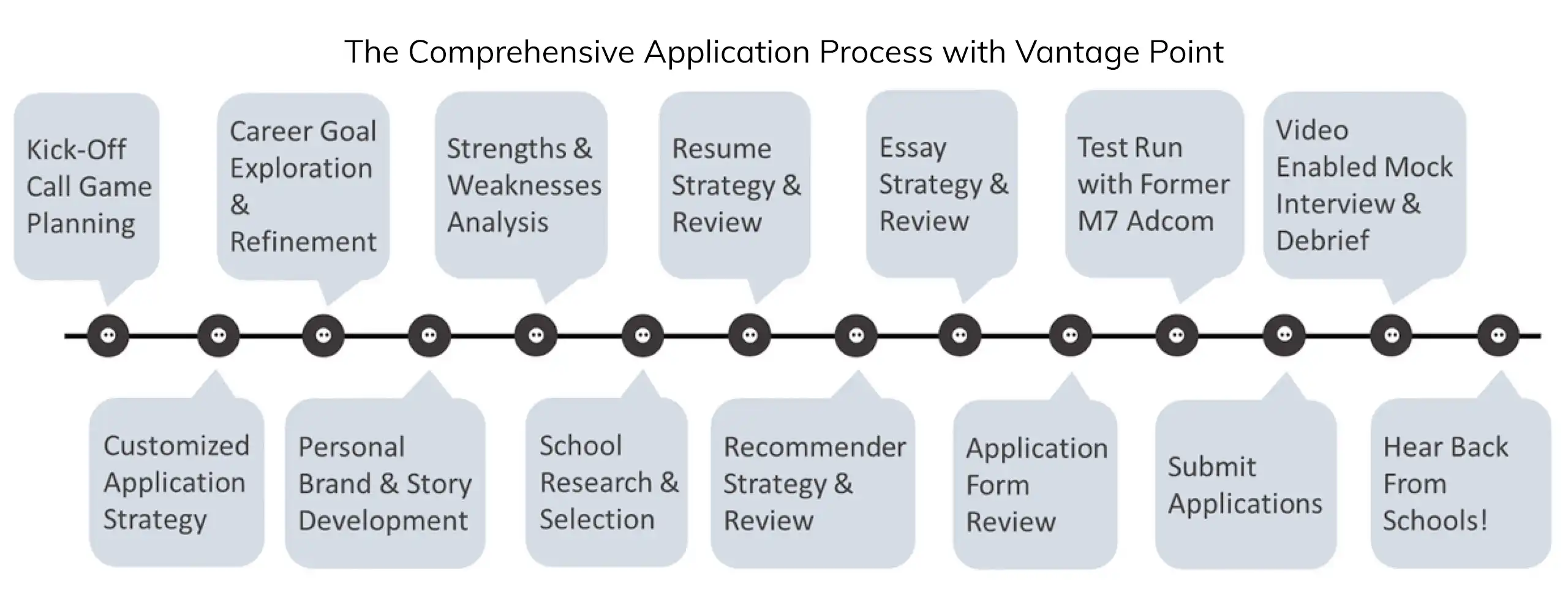How To Write Sloan’s Pre-Interview Essays
If you submitted a Round 1 application to MIT Sloan’s MBA program – or perhaps you are planning to apply in Round 2 – you may have been surprised as to how little you were required to write. While many of Sloan’s peer programs require several 400- to 500-word essays, Sloan’s only written requirement is a 300-word ‘cover letter’. That is, until the interview stage. For those selected to interview, Sloan requires two additional 250-word essays. Wondering how to write Sloan’s pre-interview essays? We’ve got you covered.
Sloan’s Pre-Interview Essay Questions
First, here are the prompts for Sloan’s pre-interview essays:
- The mission of the MIT Sloan School of Management is to develop principled, innovative leaders who improve the world and generate ideas that advance management practice. We believe that a commitment to diversity, inclusion, equity, and well-being is a key component of both principled leadership and sound management practice. In 250 words or less, please describe a time when you contributed toward making a work environment or organization more welcoming, inclusive, and diverse.
- We are interested in learning more about how you make data-driven decisions and communicate results. Please select one of the following prompts to respond to:
- Please select an existing data visualization and in 250 words or less explain why it matters to you. The data visualization should be uploaded as a PDF. Examples may come from current events, a business analysis, or personal research (e.g. climate change, COVID maps, etc.).
- In 250 words or less, please describe a recent data-driven decision you had to make, and include one slide presenting your analysis. The slide may include a data visualization example and should present data used in a professional context. Your slide must be uploaded as a PDF.
Advice for Writing Sloan’s Pre-Interview Essays
Before we dive into more specific advice, it’s helpful to consider what Sloan is looking to learn about applicants through this phase of the process. According to our resident Sloan guru (and former Sloan adcom), Kristen Lindeman, the intent of each question is quite targeted. She shares that “For Essay 1, Sloan is looking for fit and to ensure that the applicant aligns with their mission. It also is an opportunity to showcase contribution. Essay 2 is meant to demonstrate analytical ability, and ability to translate data into impact/recommendations.”
With that guidance in mind, let’s get a little more granular. As the prompt denotes, the first essay should center around one discrete story. It can be an example from work, a current extracurricular or even a college organization in a pinch, although something more recent is ideal.
The most important criteria for the story you select is that you and your actions are the central characters. Sometimes people think that, because something they did only impacted a small number of people, their contribution is not significant enough for the adcom to care about. This is not necessarily true! If it is something you took the initiative to do (as opposed to being asked) and your efforts improved the experience of even a few (in a DEI-focused way), that can make for a powerful essay. Past clients have written about driving initiatives around inclusion, making the recruiting process more welcoming to underrepresented populations and facilitating group dynamics that encouraged quieter team members to speak up.
The second essay can be more intimidating for applicants, particularly those who don’t work in heavily quantitative environments. As the prompt indicates, you can either choose to use a data visualization you created for a work project and explain what it shows (in layman’s terms) or use a data visualization you found that shows something you care about. The key is that the data component of the analysis should be the driver of a decision (or change in course) or something that caused a change in your own viewpoint. In other words, in contrast with the first essay, here the data should be the central character. In addition to explaining the data in an understandable way, tell the adcom why that data matters.
For example, a past client showed data around regional covid vaccination rates that demonstrated how underrepresented minorities were less likely to be vaccinated due to limited supply/healthcare distrust while at the same time being at the highest risk of getting covid due to working high-contact jobs and lacking paid leave. She wanted to work in health care to address these types of equity issues, so the data was very relevant to her goals.
Another client who worked in investment management showed data that had been presented to her firm by a company seeking funding. At first blush, it showed robust growth trends that the company’s management said would continue. This candidate was skeptical because of some factors not shown in the data and convinced her company not to do the deal. She made the very valid point that when examining data, context is everything.
We hope that gets your mind going as you sit down to write Sloan’s pre-interview essays! As you prepare for your interview, here are a few more articles you may find interesting:
MBA Interview Prep 101 | Vantage Point MBA
MBA Interview Pitfalls and How to Avoid Them | Vantage Point MBA
MBA Interview Prep – How to Plan for the Unexpected | Vantage Point MBA
Katie is a passionate mentor and coach, helping her clients craft a unique, compelling story by leveraging her experience as a corporate executive, alumni interviewer, and campus recruiter. Before completing her MBA at Kellogg, Katie spent five years in banking where she learned practical finance skills as well as how to operate in a demanding, high pressure environment. She pursued an MBA in order to transition to an industry role where she could utilize her finance knowledge to drive change within an organization. Post-MBA, she worked in finance and strategy for a leading CPG firm, progressing to an executive role leading the finance function for a $2B business segment. Her experience managing diverse teams led to a passion for developing others. In addition to her day-to-day responsibilities, she led her firm’s MBA recruiting efforts and served as an alumni admissions interviewer for Kellogg.




